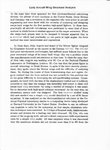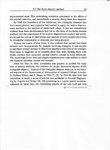drgondog
Major
The following account of an encounter between an Me 262 and a Mosquito is interesting. The Mosquito could apparently out-turn the Schwalbe, at least in this instance...
Luftwaffe: the allied intelligence files - Google Books
Regards,
Magnon
Magnon - a Spad could out turn an Me 262 - so what? think a Spad could survive repeated fast attacks, climb and dive back in? if you don't need to turn and you have a 150kt speed advantage you are an idiot to slow down and engage in the other aircraft comfort zone.





